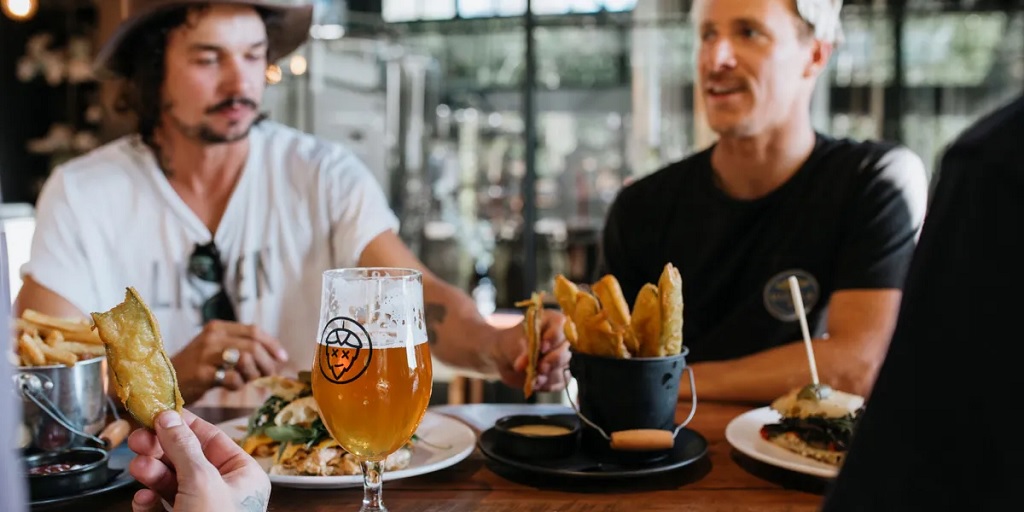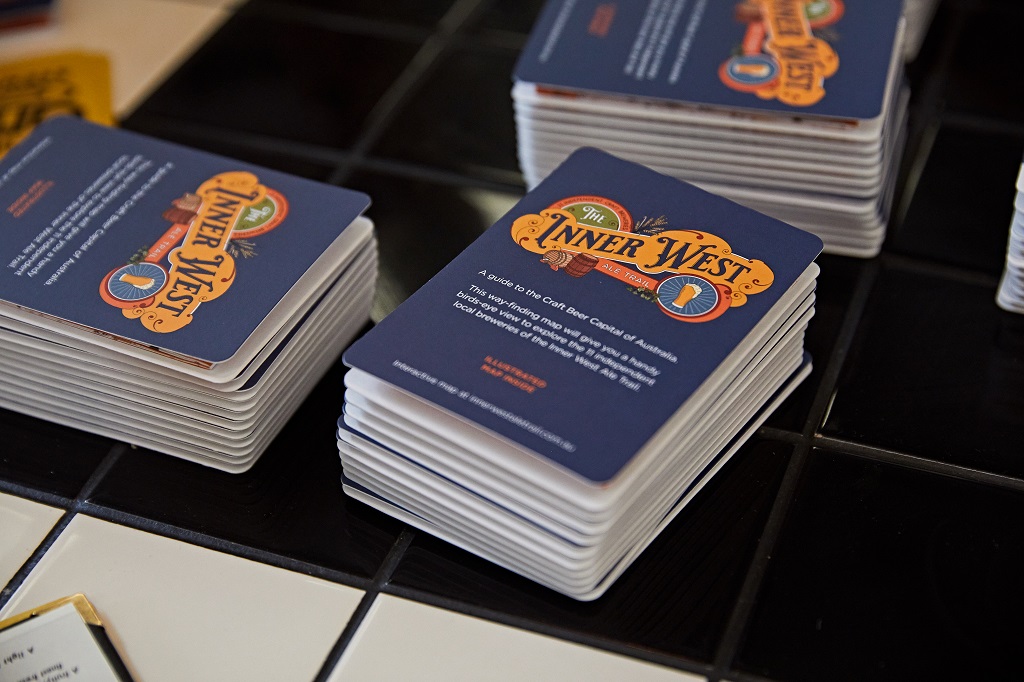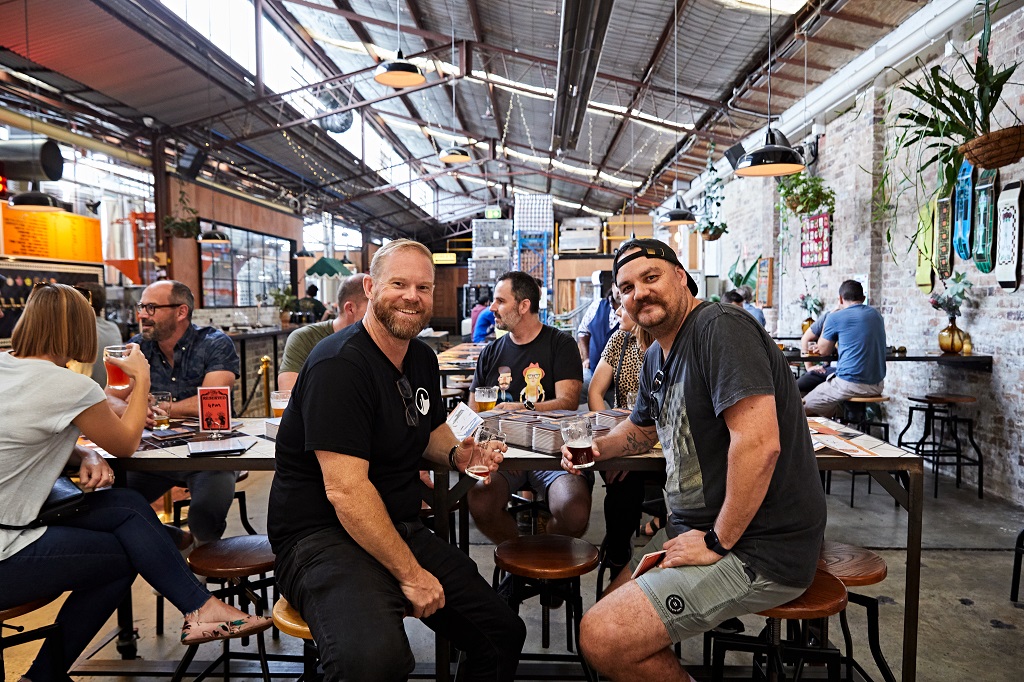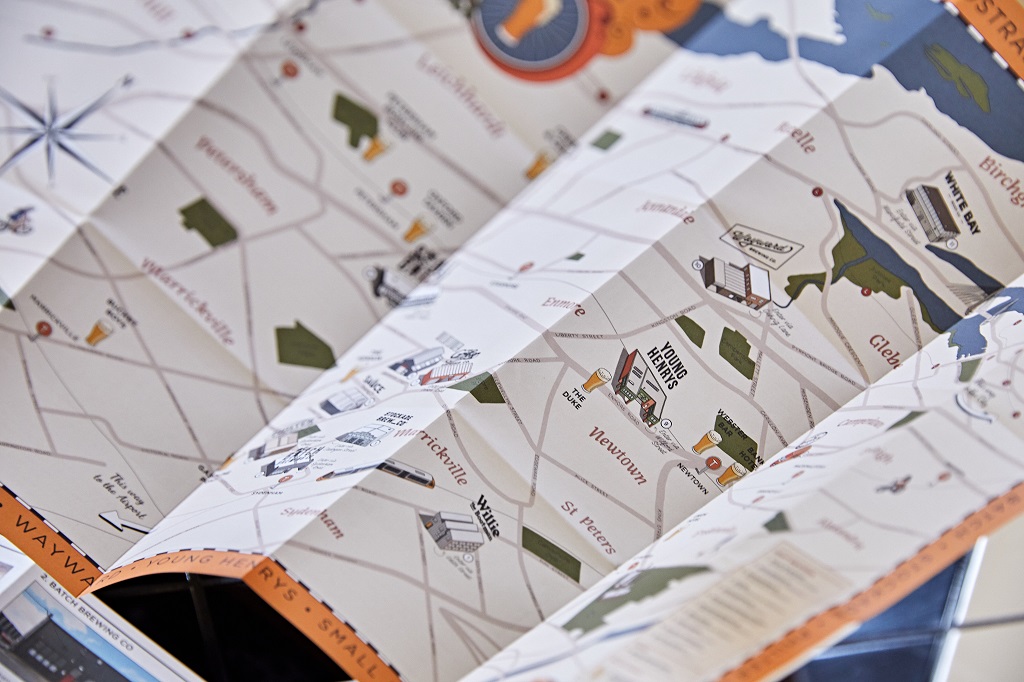The art of the ale trail June 2022
This series on Beer Tourism is proudly brought to you by Australia’s Craft Beer Capital.

Ale trails are growing in Australia as breweries band together to maximise marketing opportunities and bring more visitors through their doors.
Whether urban or rural, beer trails can connect breweries in a mutually-beneficial community, enabling collective marketing, greater bargaining power and a single point of contact for working with other organisations such as local and state governments and tourism bodies.
The Victorian Government in fact felt so strongly about it that they funded a Melbourne ale trail, the Bayside Beer Belt, whilst ale trail projects in the Melbourne suburb of Collingwood and in Sydney’s Inner West also attracted grants.
Mike Clarke is founder of Sauce Brewing and president of the Inner West Brewers Association which launched the inner West Ale Trail in 2017.
The trail has gone from strength to strength, having initially been intended to promote the area as a destination for great beer based on similar wine trails, according to Clarke.
“It’s a good way to market the area and the breweries by placing the printed maps in all the usual places you’d find tourist info like hotels, information centres, airports and the like, and of course our own taprooms,” he explained.
It was a case of “what helps one, helps all” – bringing tourists to the area who may have a passing interest in craft beer or one brewery in particular, and introducing them to many more.
“Bringing people to the Inner West to try great beer is one thing, but the beauty of the trail is that someone visiting one particular brewery is made aware of a bunch of others nearby, and they’re likely to check out more of them,” Clarke explained.
Creating clusters
The Ale Trail also allowed the Inner West breweries to act cohesively and present a united front to various government and tourist bodies as the Inner West Brewers Association – clusters which national body the Independent Brewers Association is encouraging for exactly this reason.
“Formalising the group as an association gave us legitimacy in dealing with bodies such as Inner West Council, Destination NSW, and Tourism Australia,” Clarke said.
“All have provided some level of support over the years, IWC probably the most actively.
“They too understand that beyond the tourism aspect, which brings visitors to the Inner West to spend money in the local economy, breweries are big contributors to employment, social causes that we support, and a nightlife that is virtually trouble-free.”
To set one up, Clarke explained, it was important to set up an association and properly fund it.
“You also need to ensure that you have at least a couple of members who are able to dedicate the time and energy to organising everything.”
Similarly, in Western Australia, the South West Brewers Alliance launched its own trail in 2019, the Margaret River Craft Beer Trail.
“I was part of a couple of various types of workshops with our LTA (Margaret River Busselton Tourism Association),” explained Eagle Bay Brewing Co. marketing and retail manager Margarita Wallace.
“Eagle Bay Brewing Co.’s feedback alongside other breweries in the region was to better establish the region’s breweries as part of their tourism narrative and strategies. I believe as a result the funding was sourced with Tourism WA to bring the Craft Brewery Trail to life.”

Working with local tourism associations is a great way to promote the region, she said, and can also be beneficial for raising the profile of individual breweries.
“Which in turn means visitors will come to the area, and everyone loves a locally made beer.
“At Eagle Bay, the relationships we established with MRBTA and Tourism WA from when we opened our doors provided us with so many amazing opportunities for destination marketing. From editorials with magazines like GQ, Vogue, Gourmet Traveller – to filming with travel shows from Japan, Canada and USA, to media visit collaborations with Jeep & Margaret River Pro, Gourmet Escape and Cinefest.”
But beer trails can come in many forms, and breweries do not necessarily have to have a formalised organisation in place, although it can help when collaborating with multiple stakeholders, according to Nigel Ayling, founder of the South Coast Ale Trail which launched in 2021.
“The main benefit of a co-operative approach is that the end result is greater than the sum of its parts,” explained Ayling.
“From a marketing perspective it makes sense to combine the advertising dollars from individual businesses so they can be amplified and they get more “bang for their buck” for the advertising spend.
“All of the breweries contributed equally to the set up costs and ongoing marketing costs. Our digital marketing agency manages all of the marketing so that the venues don’t have to worry about that and can focus on what they do well, which is make beer.”
South Coast was funded through co-operative marketing by the breweries, having not been able to secure government funding, suggesting that sometimes the breweries involved in beer trails would have to.
“This was quite frustrating because the NSW Independent Brewers Action Plan 2020 [says it wants to] “identify opportunities for, and facilitate the development of, regional and metro ‘food, wine and ale trails’ and work with independent brewers to build content for these trails,” Ayling explained.
“We are working with Destination Southern NSW to try and get some marketing support through their platforms and we are continuing to work with each of the Local Council’s tourism departments to try and gain further marketing support.”
Trails and locality
Being part of a trail also means that brewers can integrate further into their local area. Focusing on partnerships with other food and beverage manufacturers in the area and highlighting these connections in marketing can add a distinctly local flavour to beer trails.
Nathan Munt, founder of King River Brewing Co. which is part of the High Country brewery Trail, said common goals and purpose brough the Victorian brewers together .
“[We joined for the} collective ability to market our awesome and diverse region with the best drink you can have,” he said.
“We all believe in adventure and fitness, with our bike riding angle showing up in our rule 47 every year.
“Being part of the High Country Brewery Trail gives us some scope to leverage off the bigger guys but most importantly to learn from them and share our stories.”
Nigel Ayling of the South Coast Ale Trail is also the president of the local Chamber of Commerce, and understands that the area relies heavily on visitors.
“Having a volume of breweries in an area is the first thing, but I think there needs to be an element of tourism or experience to it as well.
“I know Sydney and Melbourne have trails but I think the South Coast offers a different type of experience to those sort of areas. We say the ”South Coast Ale Trail is not a destination, it’s a Journey” and it allows people to explore everything the coastal towns have to offer in a relaxed holiday vibe as opposed to an afternoon brewery tour.”
Trails can also provide an opportunity to engage with other local businesses and artists.
In the Inner West, local artist Peita Blythe helped develop marketing including a mural, print and online map for the Ale Trail, and this partnership has promoted innovation which attracted the attention of local government.
“The new version of the trail, including the unique 3D “zoomable” version, is all her handiwork,” explained Clarke.
“She’s currently working on a few improvements too, so it has become an ongoing project for her as well as us. For example, soon you will be able to bring up the online version on your phone and it will show you where you are on the map, using GPS location! It’s Google Maps for beer, but better.”
If you want to hear more about beer tourism, listen below to the full panel discussion from the WA Beer & Brewing Conference featuring Josh Donohoe from Sunshine Coast Craft Beer Tours.





